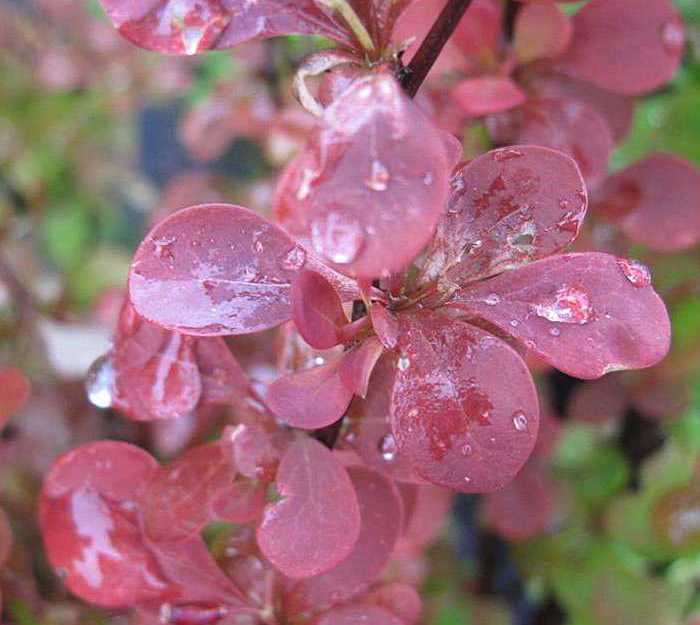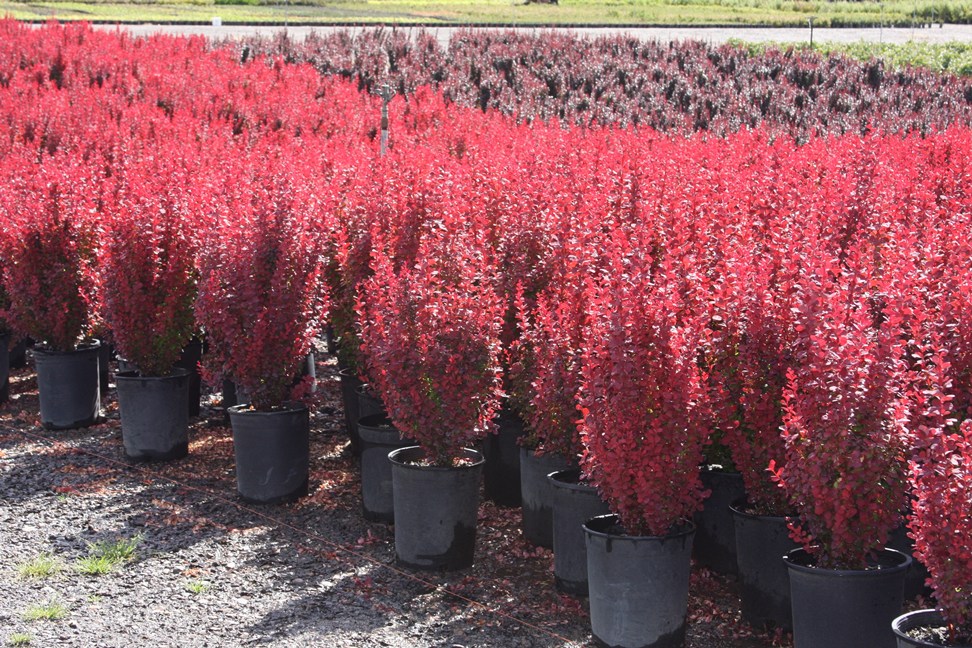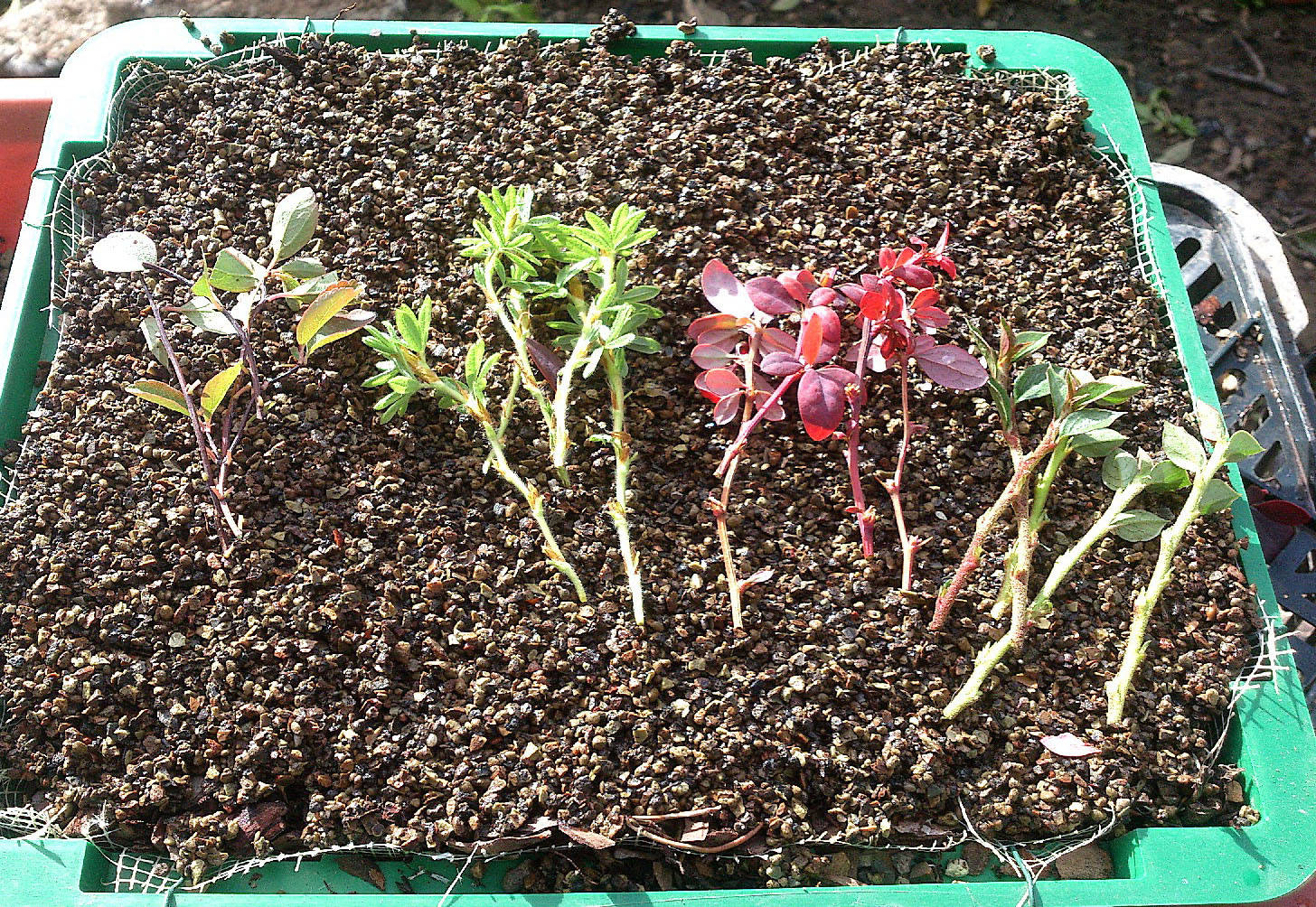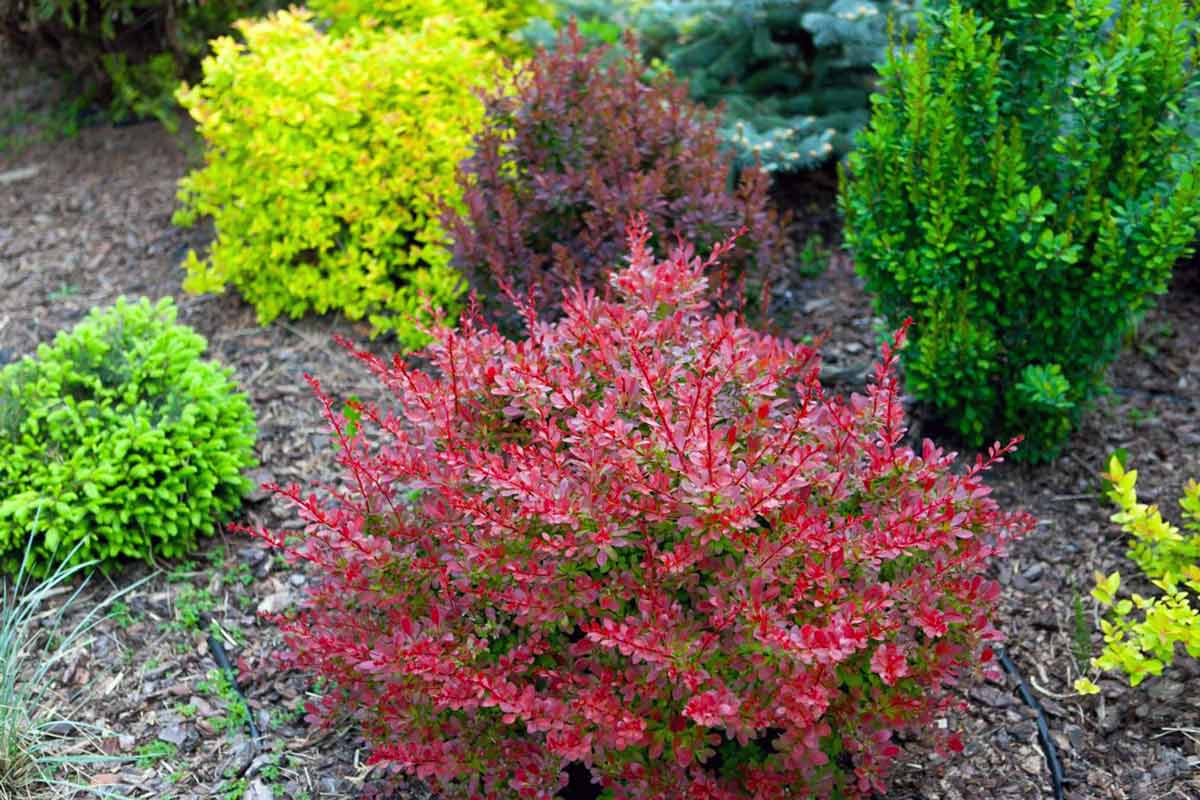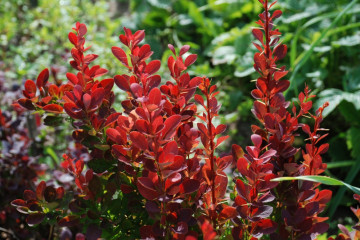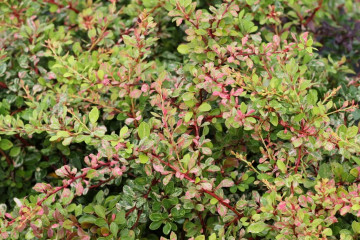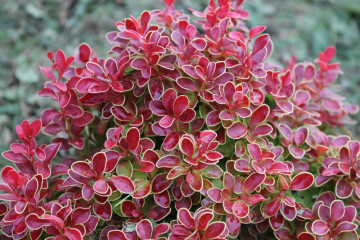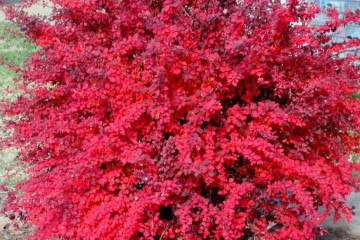Barberry Red Rocket - description and cultivation
Content:
Every detail is important in the design of the garden. There can be no trifles here. That is why among the plants necessary to create a landscape corner should be the barberry Red Rocket - an elegant shrub from the barberry family.
Description of the variety
Barberry Thunberg Red Rocket is one of the most popular shrubs of the Barberry family. He gained his fame thanks to his unusual appearance and unpretentiousness in breeding. The purple color of the foliage of Berberis Thunbergii gives the garden composition a special brightness and zest.
Barberry Red Rocket is a shrub reaching a height of 2 meters. The crown is columnar, 0.8-1 meter in diameter. The leaves are rounded, membranous with dentate edges. During the growing season, the foliage is dark green with a purple tint. By the first half of August, it acquires a purple color, and in the fall it becomes bright red.
The Barberry Thunberg Red Rocket blooms in early May. The flowers are yellow in color and are collected in inflorescences. Fruits are elongated, ripen in the first half of September.
Growing barberry Red Rocket from seeds
The description of the variety mentions that the plant can be grown from seeds, but planting with cuttings or root layers is still considered faster and more efficient. Problems with growing barberry from seed: few seeds take root, and the chances are high that the new plant will lack parental traits.
Planting from seeds
Seeds are removed from the ripe fruit of the barberry and soaked for 6-12 hours in a solution of potassium permanganate. After disinfection, drying is carried out. Seeds are planted in containers with soil to a depth of 1-1.5 cm. The volume of the container should be sufficient for the soil to retain moisture for a long time. Due to the low germination rate, it is recommended to plant 2 seeds in one container.
In the spring, the germinated seeds are transplanted into pots and grown there for another year. Then they are transplanted into open ground. By that time, the plant has developed a developed root system, which can take root in natural conditions.
Seedling care
It is recommended to cover the containers with foil or glass before germination. It is important that the soil is not waterlogged, otherwise the seeds will rot.
After sprouting, the film is removed and the containers are placed in a sunny place. The air temperature during this period should be 18-20 ° C. Before the appearance of the first two true leaves, the plant does not need additional feeding and a new portion of water.
When the air temperature outside reaches 15-17 ° C, it is recommended to harden the sprouts, and with the onset of real summer weather, the container is placed outside. During this period, watering should be moderate; it is recommended to use a urea solution as a top dressing.
Landing in open ground
Distinguish between spring and autumn planting of barberry. In the first case, two-year-old seedlings are used, and in the second, one-year-old planting material. Spring planting is carried out at the time of swelling of the buds, and autumn planting - before the onset of the first frost. The best option is the second Indian summer (end of September).
How to plant
The choice of planting method depends on what result is to be obtained. If the Red Rocket barberry will act as a hedge, it is recommended to plant the plants in a trench at a distance of 0.5 m from each other. For individual placement, the distance between the bushes should be at least 2 m.
For planting, you will need a pit with a depth of up to half a meter and surface dimensions - 50x50cm. A layer of sand up to 8-10 cm is poured at the bottom. After planting, the pit is covered with a nutritious substrate from sod soil, humus and wood ash. After compaction, the soil is watered.
Subsequent watering in the first year is recommended to be done at least once every 10 days. The exception is dry years, when the irrigation regime needs to be increased.
Plant care in the garden
Barberry Red Rocket does not apply to plants that require special care. However, there are mandatory rules that must be followed for the health of the plant and the preservation of its decorative effect. This is watering, reproduction, pruning and prevention of diseases and pest attacks.
How to water a plant
The shrub easily tolerates hot summer days and does not require additional watering. The exception is the first year, when it is necessary to water the plant at the root once every 10-14 days. The water should be at room temperature. The plant does not like the crown to be irrigated; watering at the root is enough. The next day, you need to loosen the soil under it.
Reproduction
Barberry cuttings are propagated in early summer. To do this, remove the lower leaves from a cutting 20-25 cm long and plant it in a prepared hole so that there are 3-4 leaves on top. The landing site is covered with a jar. After 2-3 weeks, the plant will give new shoots. After that, the greenhouse is removed.
In the spring, one of the shoots is bent to the ground and a mound of earth is poured on top in the middle of the shoot. For the formation of new roots, you need to cover 3-4 buds. The top with 4-5 leaves is straightened with a support. The mound is watered once every 5-7 days. The finished bush is transplanted next spring.
By dividing the bush, adult bushes are propagated, starting from 5 years of age. Autumn planting is preferable, before the onset of frost. In late September - early October, the bushes are dug out for transplanting and divided so that the new plant has 4-5 young shoots. After planting, the land is fertilized and watered.
Pruning
Despite the fact that the height of the bush reaches 2 m, it is often not recommended to cut it. Usually, pruning is done in the spring, removing the frozen tips of the shoots. Additionally, the plant is pruned to form the desired leaf shape. Pruning improperly growing branches is performed at the very base.
To form a bush of the correct shape, it is cut off taking into account the location of the buds. To get the branch directed outward, the outermost bud is left on the outside. You can orient the branch of the bush inward, leaving an extreme bud on the shoot, directed inward.
Diseases and pests
The plant has good immunity to most diseases and pests. However, sometimes it gets sick or is attacked by insects.
The main culprits of cultural health disorders are:
- Insect Barberry aphid - affects foliage.
- Pest Flower bead - damages the fruit of the barberry.
- Powdery mildew disease - affects leaves and shoots.
- Leaf spot is a viral disease.
- Fungal lesions of leaves and shoots.
The shrub is treated by timely treatment with a solution of complex preparations. Spraying with a solution of tobacco dust, laundry soap, copper oxychloride and copper sulfate is also used.
Care during and after flowering
Barberry blooms all summer. At the beginning of the flowering period, the plant needs to be fed with complex fertilizers. The second time feeding is recommended to be done in July. When the shrub has faded, it is treated with insect repellents. At the same time, fertilizing and watering are reduced, and pruning is carried out to form the appearance of the shrub.
Preparing for winter
For normal wintering, you must first cut off the dried branches. Thunberg barberry tolerates frosty winters well, but when grown in areas where frosts reach 23-25 ° C, plants under 4 years old are recommended to be covered.
Use in landscape design
Barberry is used as a free-standing plant in a Japanese garden or on an alpine slide, or it is used as a hedge. Since barberry is an edible plant, you do not need to fence it. In order for the shrub to take the desired shape, it is better to think over the design in advance and start forming the crown from 2-3 years of growth.
Barberry fits well into the urban rhythm of life, which makes it a popular ornamental plant for landscaping islands. The shrub is unpretentious, easily tolerates drought, winter frosts and does not require much attention during growth, which is why the owners of suburban areas love it so much.

